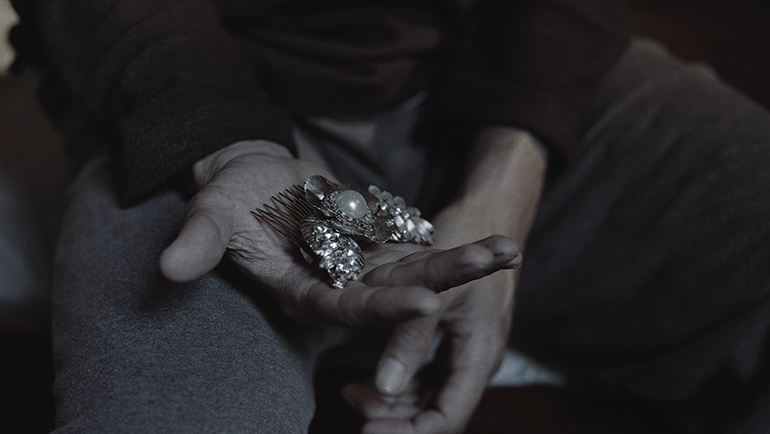A great block of ice hanging from the roof melts slowly over Henrique’s bed, the drops flowing down his face, like tears. The disappearance of the block is the moment for the man to take leave of his memories.
A Time for Farewells (Quando o Tempo de Lembrar Bastou, 2021), director Felipe Quadra’s short film, follows Henrique’s (Pedro José Ben) solitary days. He has lost his wife, Paula (Nayara Tamarozi), in the 2011 rains, in Rio de Janeiro’s mountainous region. This disaster, which left more than 30 thousand people homeless, as well as over 918 dead and 99 missing, is considered Brazil’s worst climate catastrophe.
The only person who visits Henrique is his father-in-law, Egídio (Gradstone Arantes), who tries to convince him to abandon the condemned house and go ahead with his life. However, leaving the house means also leaving his memories of Paula.
The film manages to convey the melancholy of mourning with washed out colours and long silences. Even though any human being shares this emotion – after all, at some moment we will all suffer a loss, whether of a relative, a lover, a friend, a pet or even a job – mourning is a very individual process. This is very evident in the diverse ways in which Henrique and Egídio remember Paula.
Egídio prefers to remember stories of his daughter’s childhood. The sight of the empty house and the cracked walls makes him sad as does his son-in-law’s melancholy. Henrique seems to live only on his memories and the ranch is a fundamental aspect of the maintenance of these memories.
The short does not elaborate whether Paula is among the tragedy’s dead or missing. In one way or another, Henrique’s mourning is also for the young couple’s future, for the family they would constitute.
Quando o Tempo de Lembrar Bastou does not indicate the time passing, to the extent that there is no way of telling how many days, weeks or months, Henrique wanders around the ranch, remembering his loved one, which gives the narrative a dreamlike tone. Thus the protagonist goes on building his memorial to his wife: a tree, whose fruits are books and ancient black and white photographs, coloured with wax crayons by little Paula. A memory tree.
The melting ice dripping on Henrique’s face marks the time for him to stop remembering. But where will the man go now? Will he go ahead, as his father-in-law wishes so ardently? Or sink down, buried under past memories?
Dri Tinoco

